Seven students from the IMU Bachelor of Pharmacy (Hons) programme had the exceptional opportunity to participate in a clinical placement at the University of South Australia (UniSA) from 14 April 2024 to 27 April 2024. This experience was facilitated through IMU’s partnership with UniSA, a leading institution renowned for its practical and innovative approach to education.
UniSA is a distinguished member of the Australian Technology Network of Universities (ATN), a prestigious coalition of six major Australian universities. The ATN is celebrated globally for its focus on fostering close ties with industry, conducting impactful real-world research, and producing graduates who are ready to meet the demands of the global workforce. These universities are at the forefront of developing the next generation of professionals who are equipped to make significant contributions in both business and community settings.
During their clinical placement at UniSA, the IMU students were engaged in hands-on, patient-centered learning within a clinical environment. They were introduced to advanced healthcare practices and acquired invaluable experience within the Australian healthcare system.This placement not only enhanced their clinical skills but also provided them with a deeper understanding of the integral role of pharmacists in patient care.
The opportunity to learn at UniSA allowed these students to benefit from the university’s commitment to excellence in clinical education and research, preparing them to become competent and compassionate healthcare professionals.
Lyell McEwin Hospital
Among them, Bryan Liu Shu Kian, Sam Ber Lin, and Tee Wei Loon were assigned to the Lyell McEwin Hospital. During their first day, a senior pharmacist showed them around the hospital comprising of many different departments such as the Satellite Dialysis Center, Emergency Department (ED), Medical Assessment and Planning Unit (MAPU), and Dispensary etc.
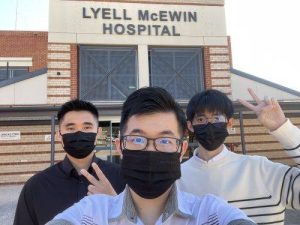
Throughout their placement, they were primarily assigned to the Dispensary, ED, and MAPU. For the students to better integrate into the healthcare systems of Australia, they were briefed on the various drug information resources specific to the North Adelaide Local Health Network such as the Australian Medicines Handbook, Therapeutic Guideline, MIMS, and the formulary.
One of the most insightful discoveries is that rather than using handwritten medical notes that can be messy and hard to decipher, many hospitals in Australia utilise the Sunrise electronic health record to document various patient information such as past medical history, active medications, lab values, patient observations, ward round notes, and even medications dispensed by community pharmacies using MyHR.
The students assigned to the MAPU ward were supervised by a clinical pharmacist. The MAPU ward is an extension to the Emergency Department. There are only 14 beds allocated in the MAPU ward, and it has the highest turnover rate compared to other wards in the hospital. Patients having infections or exacerbations will normally go through the Emergency Department and straight to the MAPU ward, and within 48 to 72 hours, the patients are expected to be discharged. There is normally one clinical pharmacist working in the MAPU ward. Their job is to obtain the “best-possible” medication history, with the source of information needing to be confirmed by at least two sources. Next, medication reconciliation and reviewing process will be carried out through the Sunrise system, as it contains all previous admission notes and medications that the patient is taking.
Besides that, the clinical pharmacist, together with medical officers and consultants will have ward rounds in the early morning. The purpose of ward rounds is to review every new patient and provide a suitable treatment plan for them. Ward rounds normally start at 9am and usually end in about 1 to 2 hours, depending on the number of new patients. Pharmacists in Australia are able to chart medications independently, provided they are co-signed by a medical officer. However, they need to discuss this with the consultants and medical officers during the ward rounds. Next, the staff in MAPU ward will have a huddle after the ward rounds to quickly go through all patients’ conditions and discuss which patient can be discharged later in the day.
At the Dispensary
In addition, the students also gained valuable knowledge through their placement at the dispensary. The dispensary works by receiving medication orders requested by pharmacists or medical officers for patients undergoing both inpatient and outpatient care. These orders are processed and based on the medication ordered, the dispensary staff will use the BD Rowa Vmax dispensing robot to retrieve the medication automatically and they will be placed into different baskets depending on the urgency of the order. Urgent orders are placed in red baskets while normal orders are placed in gray baskets. These baskets are then distributed to a preparation table to be packed properly.
The students acquired hands-on experience of retrieving, packing, and placing the requested medications into trolleys which will be taken by courier staff to the respective floor and ward number hourly. Before the medications are delivered to patients, pharmacists will check the medication’s indication, dose, frequency and duration to ensure no contraindication to the patient’s medical condition and medication history.
The three students also learned about the Webster pack, which is a pre-packaged medication dispenser that simplifies the process of taking multiple medications. The pack is organised by the day of the week, with individual compartments for each dose of medicine. This makes it easy for patients to keep track of their medications, and ensures they never miss a dose.
At the Emergency Department
Working as a pharmacist in an Emergency Department (ED) is a dynamic and demanding role that requires quick thinking and strong communication skills. In this fast-paced environment, pharmacists play a crucial role in ensuring patient safety and optimizing medication therapy. They work closely with physicians, nurses, and other healthcare professionals to review medication orders, provide drug information, and resolve medication-related problems.
One of the key responsibilities of an ED pharmacist is to conduct medication reconciliation, which involves obtaining a complete and accurate list of the patient’s current medications, including prescription drugs, over-the-counter products, and herbal supplements. This information is essential for assessing the patient’s medication history and identifying any potential drug interactions or allergies. The medical reconciliation was done by using a computerized (SUNRISE) system.
In addition to medication reconciliation, ED pharmacists are often involved in medication management for critically ill patients. They may assist in the selection and dosing of medications, monitor for adverse drug reactions, and provide recommendations for alternative therapies when necessary. This requires a deep understanding of pharmacokinetics, pharmacodynamics, and the principles of evidence-based medicine. ED pharmacists also play a vital role in medication education and counseling.
They educate patients and their families about their medications, including proper administration techniques, potential side effects, and the importance of adherence to therapy. This helps to empower patients to take an active role in their own healthcare and promotes medication safety.
Furthermore, ED pharmacists are integral members of the healthcare team during medical emergencies and resuscitation efforts. They are responsible for preparing and dispensing emergency medications, such as antidotes and life-saving drugs, and ensuring that they are administered promptly and accurately. Their expertise in pharmacology and therapeutics is essential for optimizing patient outcomes in critical situations.
Flinders Medical Centre
Another two IMU students, Sandy Yong and Lim Lei Ze, had their placement in another hospital called Flinders Medical Centre (FMC).
FMC is nestled in Bedford Park, Adelaide and it plays an essential role in South Australia’s healthcare system. It is a part of South Adelaide Local Health Network (SALHN) along with Noarlunga Hospital and Drugs and Alcohol Services South Australia. Since its establishment in 1976, FMC has grown into a leading tertiary teaching hospital, renowned for its comprehensive range of medical services and cutting-edge research initiatives. In recent years, FMC has undergone significant upgrades to enhance its infrastructure and expand its service capacity. These developments are part of a broader strategy to meet the growing healthcare demands of South Australia and beyond. As FMC continues to evolve, it remains dedicated to its mission of delivering exceptional healthcare, fostering medical innovation, and serving the community with unwavering commitment.
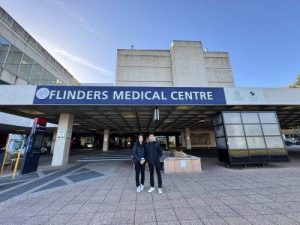
Their hospital placement at FMC was made possible with the help of University of South Australia (UNISA). Prof Matt Sykes and Ms Narelle Chong, UNISA’s representatives, made the Malaysian students feel at home with their warm welcomes and tours around the UNISA campus as well as the city center.
Placement at FMC was a new and exciting experience as it has a medical system which differed from the system in Malaysia. In FMC, they utilise an electronic medical record called Sunrise. This system allows for seamless communication among healthcare professionals as they can review clerking notes written by their colleagues. Compared to the system in Malaysia which uses physical handwritten health records, this electronic record helps save time and can prevent fatigue which can further reduce the possibility of medication errors thus increasing patient safety.
The experience a student can obtain from doing a placement at FMC is monumental. They placed the students into many departments of the hospital such as the dispensary, Cardiac-Thoracic Surgical Unit (CTSU), Stroke and Neurology and Pre-Admissions Clinic (PAC). In each department, there were senior pharmacists which they shadowed, and they gave them more insight into the cases that they were involved in and how they would tackle the situation while ensuring the patient’s safety.
The ward pharmacist would also question them to test their knowledge on medications used and inform them on their appropriate clinical use.
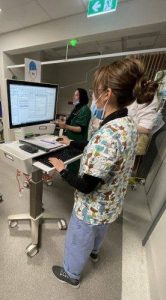
Beside clinical knowledge, this placement also offered a new perspective on job opportunities for the students in the future. Working in Australia seemed impossible, but after learning about the shortage of pharmacists there, the option of working in Australia became more viable than before.
Royal Adelaide Hospital (RAH)
Two other IMU students, Isshmeet Kaur and Vaaisshnavi A/P Tharmendran had their placement at the Royal Adelaide Hospital (RAH) situated at Port RD, Adelaide. On the first day of the placement, a senior pharmacist welcomed the students before a short orientation on the healthcare system’s background in the RAH.
Healthcare system in South Australia is divided into five main networks, Central Adelaide Health Network (CALHN), Southern Adelaide Health Network (SALHN), Northern Adelaide Health Network (NALHN), Women’s and Children’s Health Network and Regional Local Health Networks and Rural Support Service.
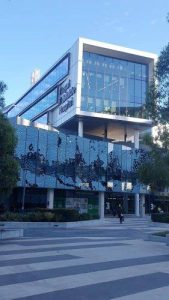
RAH is under the CALHN with two other hospitals, one health service, and one rehabilitation centre. The RAH is South Australia’s largest public hospital providing a compressive range of secondary and tertiary treatment. The Royal Adelaide Hospital stands out with its distinctive offering of 800 beds, all equipped as 100% single overnight patient rooms, fostering an optimal healing environment characterized by enhanced privacy and more effective infection control.
The students had a remarkable opportunity to gain experience and knowledge in outpatient pharmacy, inpatient pharmacy, clinical pharmacy, clinical trials and manufacturing facility at the hospital.
In the dispensary unit, they had the opportunity to use iPharmacy software to dispense medications, demonstrating meticulous attention to detail in calculating precise doses and quantities, and ensuring accurate dispensation of medications. In addition, they had gained insight into the dispensing of dangerous drugs by shadowing a pharmacist. The students were also introduced to ScriptCheckSA software, which enables pharmacists to identify and mitigate potential risks in real-time before dispensing monitored drugs, thereby minimising the risk of overdose, misuse, or casualties.
At the manufacturing site, the student gained insights into the preparation of cytotoxic drugs while assisting pharmacists with drug calculations. The manufacturing facility also known as the production site is where most of the drug being reconstituted, clinical trial drugs, creams and ointments product were made from raw materials, and oral dosage forms such as capsules were being made as well. Cytotoxic materials are handled with extreme care and appropriate labels were placed to ensure proper handling of the materials whilst in transportation to other parts of the hospital such as wards, outpatient and inpatient dispensary, and day care centre.

At least two pharmacists are required to make sure the drug, dose, and prescription ordered are appropriate and legitimate before the product is being assembled. And after the product is made, it is thoroughly checked for presence of any particles, final dose checking, and appropriate raw materials were used. As the Royal Adelaide Hospital receiving orders for cytotoxic drugs from other hospitals, they meticulously prepared and dispatched these orders via courier before the scheduled treatment day.
Furthermore, the clinical trials department provided another intriguing experience, where they observed firsthand on how clinical trials were conducted and witnessed the distribution of trial drugs to patients.
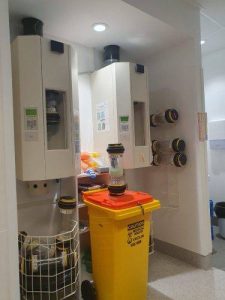
Another enlightening experience was shadowing a clinical pharmacist in the general medicine ward.
Under the guidance of the clinical pharmacist, they conducted patient history interviews, provided discharge counseling, and performed therapeutic drug monitoring for patients in ward. This opportunity allowed the students to apply their pharmacological knowledge and communication skills effectively, while also expanding clinical expertise to enhance patient care outcomes.
Overall, the students are deeply grateful for the opportunity to complete their clinical placement at hospitals in Adelaide. They extend their heartfelt thanks to the School of Pharmacy at IMU, Prof Matt Sykes, and Ms Narelle Chong from the University of South Australia for their invaluable support in achieving their goals and for providing this golden opportunity.

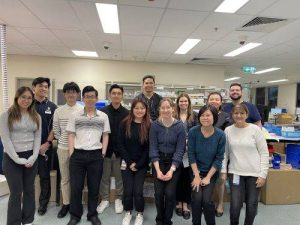


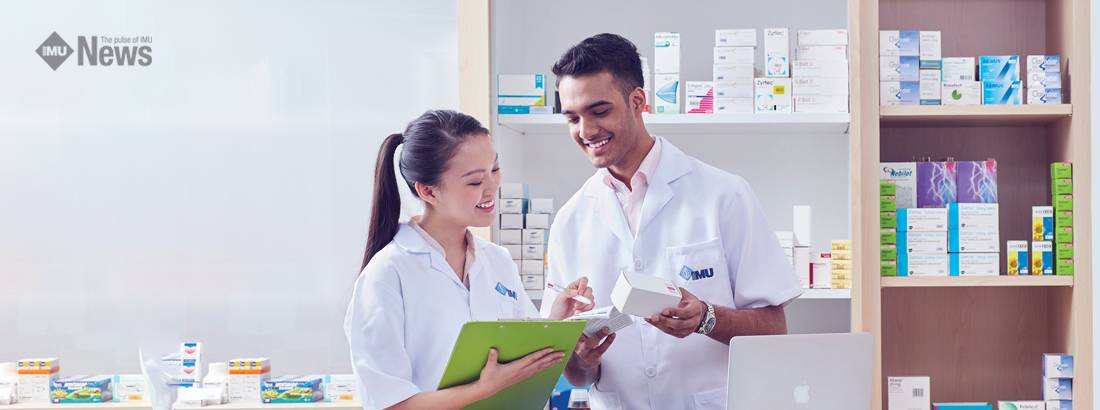
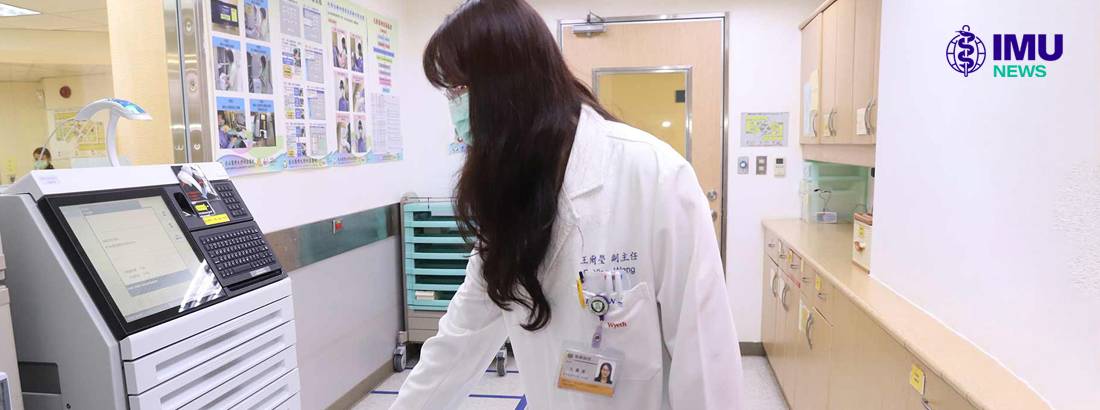

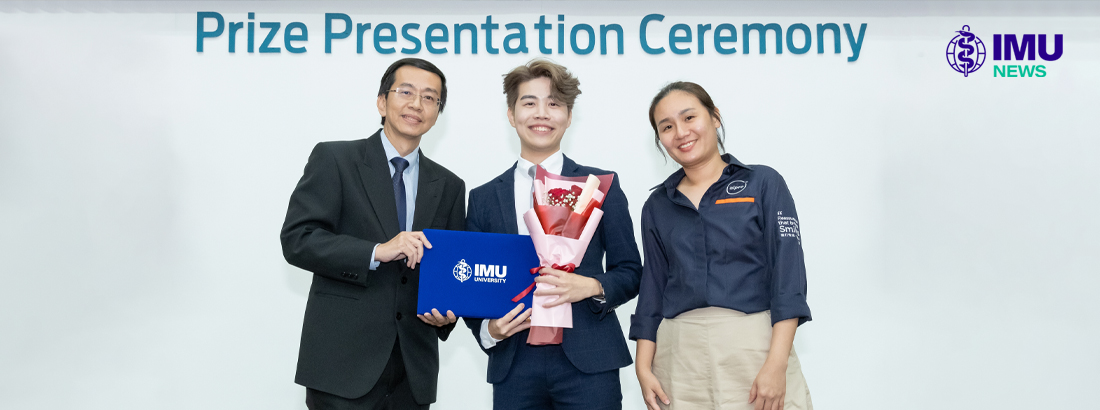
No approved comments.